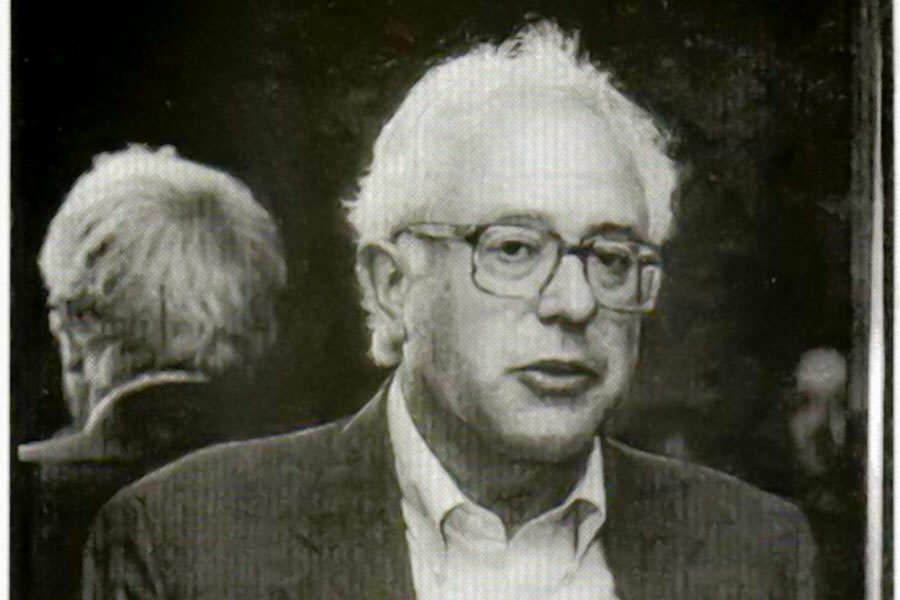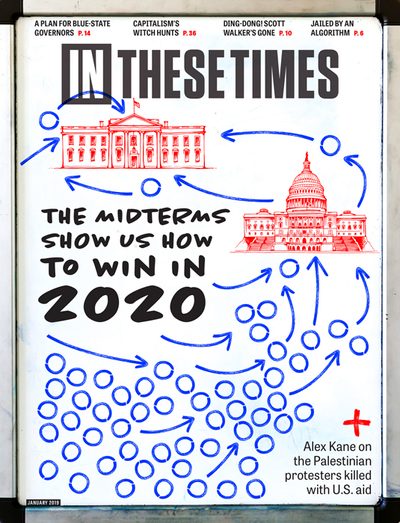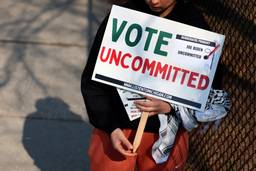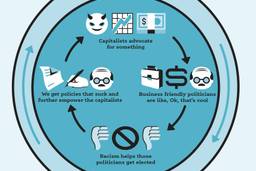A Left Sub-caucus in Congress Could Help Push Medicare for All
Back in 1991, Bernie Sanders helped create the Congressional Progressive Caucus. Now, a sub-caucus within the CPC could help rally the progressive Left.
In These Times Staff

After her June 2018 victory over incumbent Rep. Joe Crowley in New York’s Democratic primary, Alexandria Ocasio-Cortez (D-N.Y.) floated the idea of organizing a left caucus within the Congressional Progressive Caucus (CPC).
“If you can carve out a sub-portion, a sub-caucus of the Progressive Caucus … but one that operates as a bloc, then you could generate real power,” said Ocasio-Cortez on Jacobin podcast The Dig. Though she later clarified that this was a “casual” idea and not a “drafted plan,” it has generated excitement on the Left.
A similar idea lay behind the 1991 creation of the CPC by five members of the House: Ron Dellums (D-Calif.), Lane Evans (D-Ill.), Peter DeFazio (D-Ore.), Maxine Waters (D-Calif.) and Bernie Sanders (I-Vt.). They were soon joined by Barney Frank (D-Mass.) and Nancy Pelosi (D-Calif.), among others, in a caucus formed to counter the tepid corporate liberalism of Clinton Democrats.
In In These Times’ May 1995 cover story, “Life of the Party,” John Canham-Clyne explored how the CPC mobilized against the signature legislation of House Speaker Newt Gingrich (R-Ga.), the Contract with America, which was nurtured in the bullshit of the rightwing Conservative Opportunity Society. This was a group of about a dozen House members that collaborated with the much larger conservative Republican Study Committee (the GOP equivalent of the CPC). Canham-Clyne wrote:
Soon after the [1980] election a group of young House Republicans began holding weekly meetings dedicated to building a conservative majority. Led by Newt Gingrich, they coalesced around a vision of a free-market meritocracy dubbed the “Conservative Opportunity Society.”
Fourteen years later, the second wave of the Reagan Revolution is cresting in the House of Representatives, fed by the ideas and energy of Gingrich and his conservative colleagues.
Canham-Clyne went on to write that if the GOP’s red wave in the 1994 midterms “represents the high tide of a well-organized conservative movement,” it was being counteracted by the “strong undertow [that] has gathered beneath it thanks to the resilient House Progressive Caucus.” The caucus, he wrote, was gaining power as “rifts in the Democratic Party become more pronounced”:
With the Democrats in disarray, the Progressive Caucus alone has fashioned a broad intellectual and legislative response to the Republican agenda. Their 11-point manifesto, titled “The Progressive Promise: Fairness,” calls for a crackdown on corporate crime, the closing of dozens of tax loopholes for corporations, an increase in the minimum wage, single-payer health care, deep cuts in defense and intelligence spending, and a $127.2 billion investment over two years in infrastructure repair and environmental cleanup.
The parallels between 1995 and today are striking, with the Democratic Party’s progressive and centrist wings at odds, particularly over healthcare. Canham-Clyne wrote:
Gingrich and the Republicans have exploited populist discontent by denouncing the “liberal elite,” railing against big government and appealing to anti-immigrant sentiment. But many progressives believe that focusing on bread-and-butter issues such as corporate welfare and healthcare reform offers a chance to redirect populist sentiment. … House progressives feel that the skittishness of party leaders is costing the Democrats important political opportunities. The healthcare battle was a case in point. The single payer option, unlike Clinton’s unwieldy “managed care” plan came equipped with formidable grassroots appeal among the elderly, the middle class and the working poor — constituencies that make up a majority of Americans.
The terms may have changed in 2018, but the debate is the same. Single-payer partisans are rallying under the banner of Medicare for All, which is where Ocasio-Cortez’s sub-caucus, should it come to fruition, could play a prominent role.
The Republican far Right has long understood the power of ideologically cohesive caucuses. In 2015, they formed the Freedom Caucus, most of whose known members also belonged to the Republican Study Committee. (Since the names of all of the Freedom Caucus members are not public, the exact number of U.S. Representatives who belong to this secret society is unknown.) In 2015, the Freedom Caucus successfully purged former Rep. John Boehner (R-Ohio) as House Majority Leader.
With the 2018 midterms, the CPC has grown from 78 to 98 members (including Bernie Sanders) — or 40 percent of House Democrats — too large to serve as a cohesive voting bloc on many issues. But, if Rep. Ocasio Cortez’s idea catches hold, the Progressive Caucus may soon be leavened with new, left energy — a sub-caucus that, if it can hold itself together and vote as a bloc, could wield considerable influence in a Democratic House. Single payer, anyone? A 70 percent tax on all income over $10 million? Free college education?
The times seem ripe for a sub-caucus naming contest.








